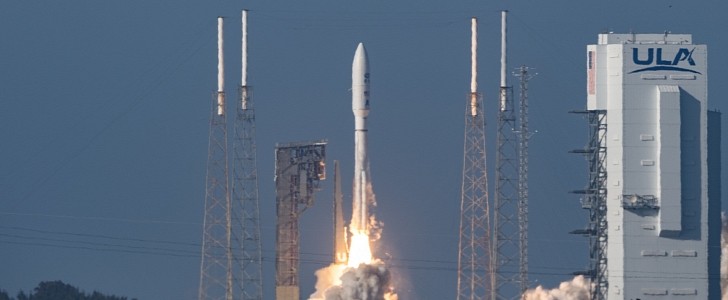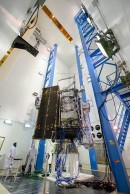Tracking wildfires, drought, floods, hurricanes, and other climate phenomena across the Western Hemisphere will get easier from now on, thanks to NOAA’s (National Oceanic and Atmospheric Administration) new and sophisticated weather satellite. GOES-T was successfully launched.
Thanks to the collaborative effort of Lockheed Martin, NOAA, and NASA, the satellite took off on March 1 from Florida’s Space Coast. Once it reaches geostationary orbit, its name will change from GOES-T to GOES-18 and it will take over the duties of GOES-17.
Built by Lockheed Martin, the GOES-T satellite was designed to make life easier for meteorologists in the United States, being designed to collect and share critical weather data from over the West Coast of the U.S. In addition to monitoring the weather, the GOES-T will also identify volcanic eruptions, measure land and sea surface temperature, keep an eye for solar flares that could interfere with telecommunications on our planet, and more.
The spacecraft is scheduled to enter operations only in January 2023 as it will first undergo an on-orbit checkout of its instruments and systems. And while we’re on the subject, the GOES-T features two high-tech instruments.
One of them is a Geostationary Lightning Mapper (GLM) that Lockheed Martin says it’s a first-of-its-kind and can track lightning in real-time, helping meteorologists to identify threatening storms. The other instrument is a Solar Ultraviolet Imager (SUVI) that measures the sun in extreme ultraviolet wavelength range, helping specialists predict solar events that could disrupt navigation systems or power utilities on Earth.
The GOES-T is the size of a small school bus and was assembled by Lockheed Martin in Colorado. It was transported to the Kennedy Space Center in Florida in November 2021, onboard Air Force’s largest airlifter, the C-5 Galaxy. It has a payload of five helicopters and can transport cargo on longer distances than any other aircraft.
Built by Lockheed Martin, the GOES-T satellite was designed to make life easier for meteorologists in the United States, being designed to collect and share critical weather data from over the West Coast of the U.S. In addition to monitoring the weather, the GOES-T will also identify volcanic eruptions, measure land and sea surface temperature, keep an eye for solar flares that could interfere with telecommunications on our planet, and more.
The spacecraft is scheduled to enter operations only in January 2023 as it will first undergo an on-orbit checkout of its instruments and systems. And while we’re on the subject, the GOES-T features two high-tech instruments.
One of them is a Geostationary Lightning Mapper (GLM) that Lockheed Martin says it’s a first-of-its-kind and can track lightning in real-time, helping meteorologists to identify threatening storms. The other instrument is a Solar Ultraviolet Imager (SUVI) that measures the sun in extreme ultraviolet wavelength range, helping specialists predict solar events that could disrupt navigation systems or power utilities on Earth.
The GOES-T is the size of a small school bus and was assembled by Lockheed Martin in Colorado. It was transported to the Kennedy Space Center in Florida in November 2021, onboard Air Force’s largest airlifter, the C-5 Galaxy. It has a payload of five helicopters and can transport cargo on longer distances than any other aircraft.






